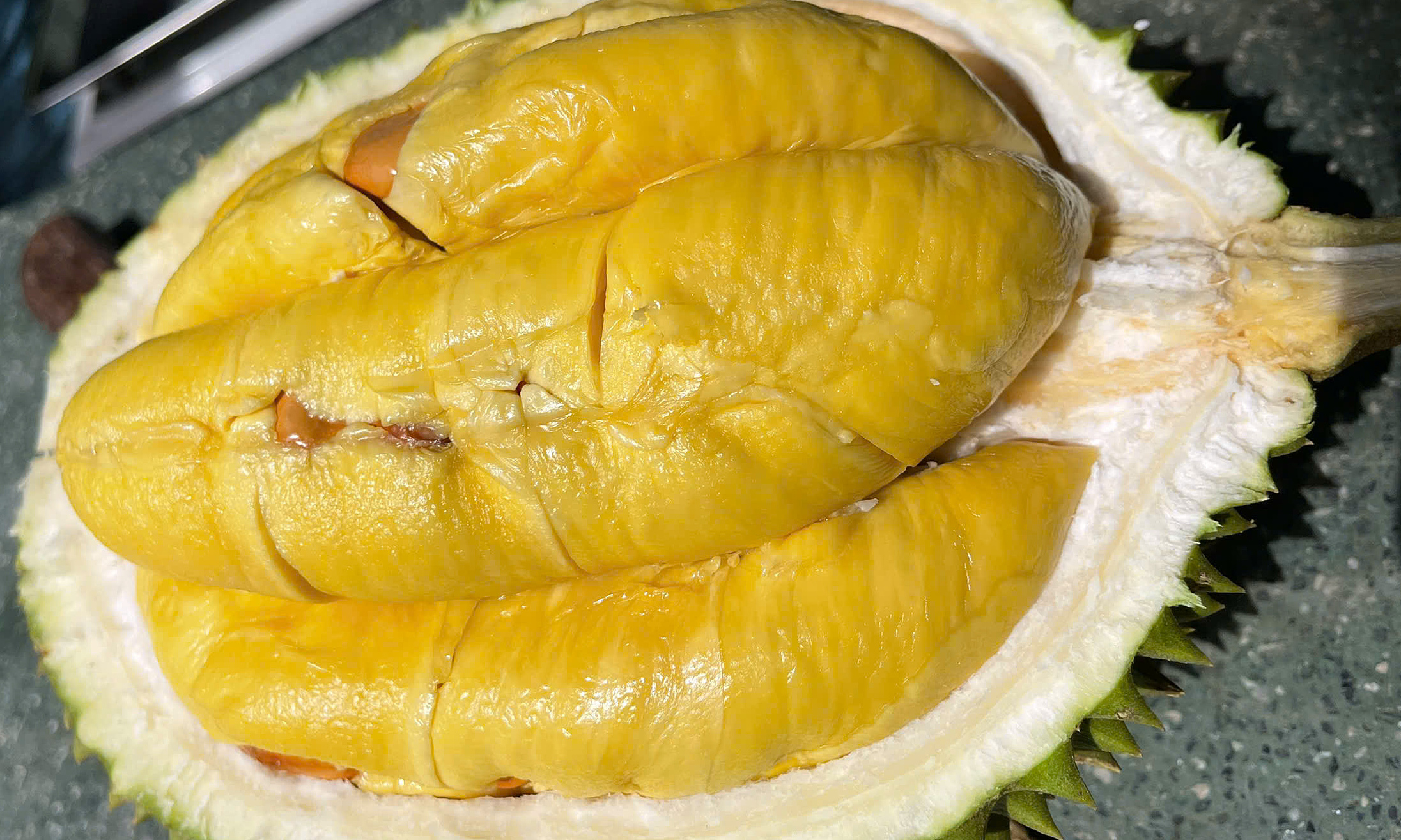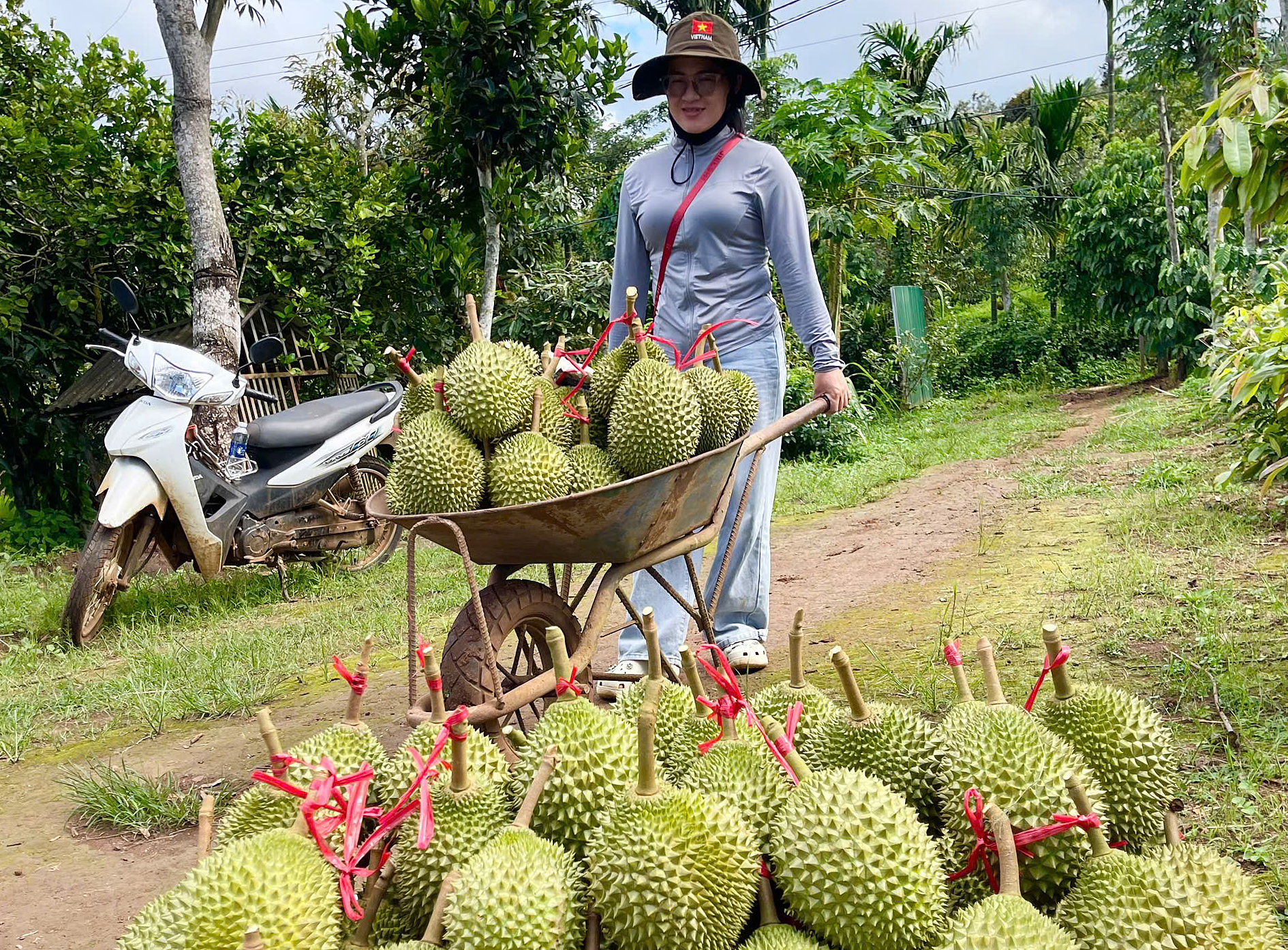Surveys at orchards in Dak Lak, Can Tho, and Tien Giang show that the price of Musang King durian has increased compared to last year, with prices at the farm gate around 90,000-120,000 VND per kg. Selected grade-one fruits, with soft, golden flesh, fetch 140,000 VND per kg.
Mai, the owner of a Musang King orchard in Dak Lak, said that this year's yield increased by 20%, but the number of grade-one fruits is limited. Unsorted durians sell for about 100,000 VND per kg, 20,000 VND higher than last year. With a harvest of two tons, Mai's family earned about 200 million VND. "Musang King is difficult to cultivate, and it takes years to recoup the investment, so I'm still not at ease," she said.
The increased purchase price at the farm gate has pushed retail prices higher again. Each kg of grade-one fruit, large in size, is sold at traditional markets for around 220,000-280,000 VND per kg, while last year it dropped to 150,000 VND. Smaller fruits fluctuate around 100,000 VND per kg.
 |
Grade-one Musang King with evenly golden flesh and a round shape. Photo: Phan Thi Hang |
The Musang King durian variety is known as the "king of durians" thanks to its rich, sweet flavor with a distinctive bitter aftertaste. This durian has an oval shape, dark green skin, large thorns, and a clearly defined five-segmented bottom. When cross-pollinated with Thai varieties, the Musang King fruit is smaller than Ri6 or Monthong, but rounder and more attractive, with chewy and flavorful flesh.
The driving force behind the price increase of Musang King durian this year comes from the domestic market. Manh Khuong, a trader in Can Tho, said that prices at the farm gate have only increased slightly, but retail prices have risen sharply due to the scarcity of grade-one fruit. "The supply in the Mekong Delta is almost depleted, while demand remains very high, especially during the Mid-Autumn Festival," he said.
Phan Thi Hang, another trader in Dak Lak, also confirmed that the quality of Musang King is inconsistent due to heavy rain, making the flesh prone to defects, so the price of quality fruit has soared. "At the beginning of the season, I purchased 5-10 tons daily, but now at the end of the season, it's only a few hundred kilograms. That's why the price has been pushed up," she said.
According to the Dak Lak Durian Association, Musang King in Vietnam still has great potential for development. The trees yield the most consistently from the 10th year onwards, while most of the current area is only in the 4-7 year stage. With proper planning and cultivation, this durian variety, in addition to meeting domestic demand, can make inroads in the export market.
 |
Traders purchasing Musang King in Dak Lak. Photo: Phan Thi Hang |
Not only Musang King, but many other durian varieties have also increased in price. The Central Highlands has become a focal point, with grade-A Thai durian being offered by traders for 90,000-100,000 VND per kg, 15% higher than the same period last year.
In Lam Dong, each kg of grade-A Thai durian fluctuates between 82,000-91,000 VND. Ri6 durian maintains the same level as last year, around 44,000-50,000 VND. This development reflects the sustained strong purchasing power of Vietnamese durian in the markets, pushing the general price level slightly higher.
According to the Vietnam Fruit and Vegetable Association (VINAFRUIT), fruit and vegetable exports in September reached about 1.3 billion USD. The recovery of durian, the main fruit accounting for the largest proportion in the fruit and vegetable export structure, contributed to the growth of the entire industry.
China remains the main buyer of this fruit, estimated at nearly 800 million USD in September. In total, from the beginning of the year to date, Vietnam's fruit and vegetable exports are estimated at over 6.1 billion USD, an increase of 8.3% over the same period last year.
Thi Ha












